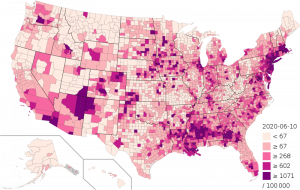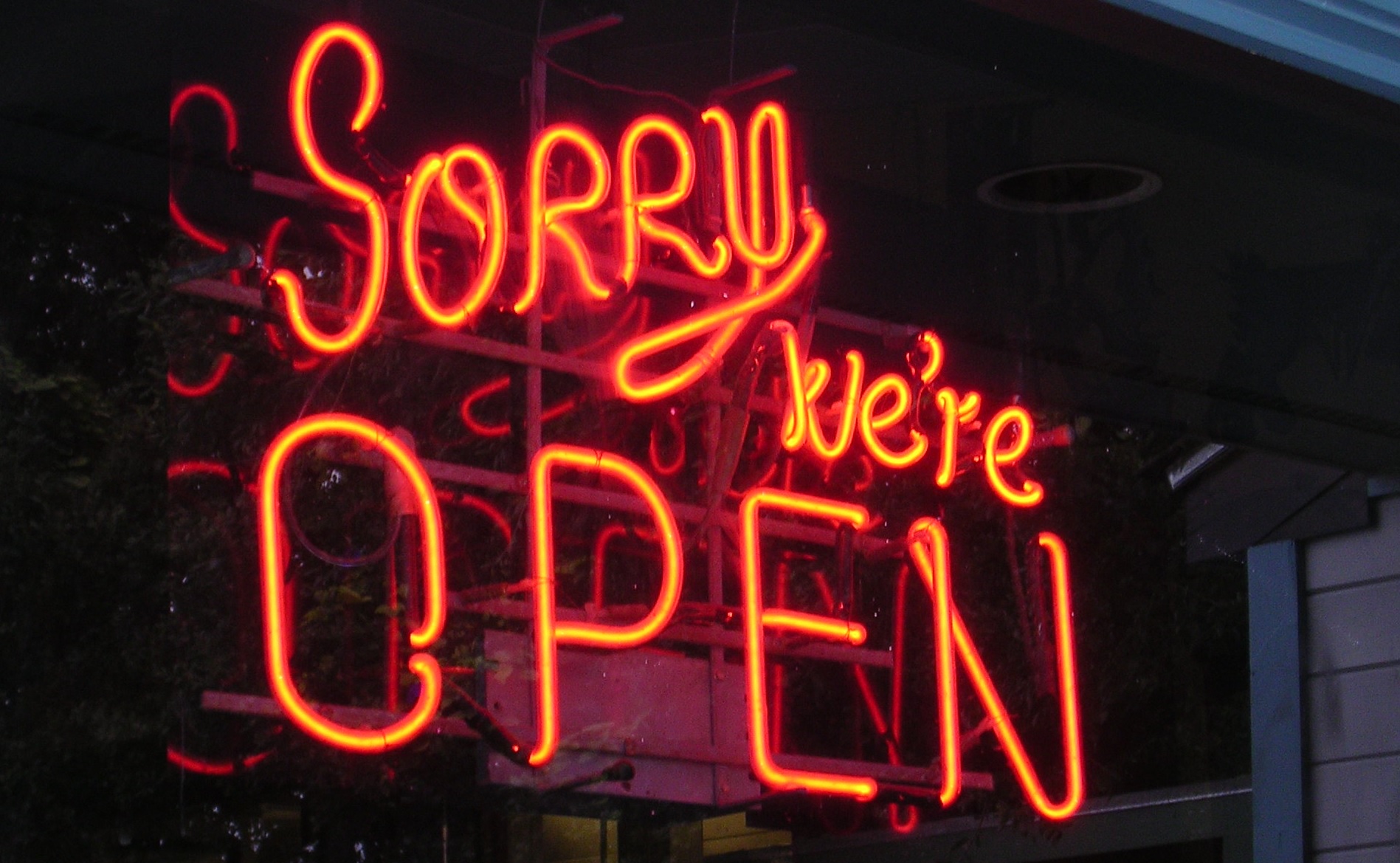All around the country, it’s time to reopen and rise! How well we survive the utterly predictable COVID spike is a reflection of our cultural values.
I get it. We’re all sick of COVID-19, seeing people in face masks, and social distancing. It gets old after a while. We want to get back to our routines from BC (Before Coronavirus). Going back to work, having a drink and a meal that we didn’t cook for ourselves, and seeing our friends and family again: we’re ready for life to get back on track. We want to reopen and rise like a phoenix, and we want to forget that the ‘Rona ever existed.
One problem: we may be done with COVID, but it is not done with us.
As states around the country loosen lockdown restrictions, furloughed workers and eager customers are (more or less) getting back to business. However, unlocking those doors also opened the way for a resurgence of coronavirus cases across the United States. The reopen and rise in activity giving the pallid economy a rosy glow hasn’t been nearly as healthy for the people stuck in it.
It’s not like we couldn’t see this coming. During the deadly 1918 influenza pandemic, governments were more conservative (in the old “cautious” or “risk-averse” sense of the word) than we’re seeing now, often waiting for a significant drop in infection rates before lifting restrictions. Some cities were more cautious than others, and the cities that delayed reopening (and imposed more strict quarantines when the inevitable rise in cases appeared) are the ones that weathered the awful second wave of the pandemic and emerged with their populations and economies more intact afterward. The second wave was still more fatal than the first.
It doesn’t look like we’re going to learn from the past in 2020, though.

A month ago, it was already clear that Florida’s reopen and rise in COVID cases was setting the stage for the country as a whole. The Department of Homeland Security circulated an internal document concerning three resurgent virus hotspots, with Palm Beach reporting a 71% increase in new cases the week after they loosened restrictions.
Not long after, Texas reported the largest single-day spike in confirmed COVID infections with 1,800 new cases on May 16th. Despite the jump, they still plan to reopen and rise, if they must, because they cleared enough hospital “surge beds” to care for an acceptable number of resulting casualties. With the record number of hospitalizations that came on June 8th, those beds didn’t stay empty long. Currently, Houston is considering reimposing a stay-at-home order.
When Georgia reopened, it looked like they were already “flattening the curve” in a big way. However, that interpretation of the numbers was a mistake so egregious, it must have been deliberate. To produce a chart that appeared to show a decreasing number of COVID cases over time, they simply showed the days out of order. Currently, Georgia is experiencing a jump in their infection rate and an increase in hospitalizations related to the virus.
Two weeks after their first phase of reopening, North Carolina had a record one-day increase of COVID cases. This came as they began the next phase of reopening. They set another record for hospitalizations in mid June.
Alabama and Mississippi are also going through a phased reopen and rise cycle. It’s almost as if we’ve seen this pattern repeat itself in state after state all over the country.
In Northern California, Lassen County was one of the first counties in the state to reopen, back in early May. How are they doing now? Well, they considered reimposing restrictions to battle the resulting virus outbreak. It’s especially notable because this is a sparsely populated rural county, like many such places around the country that felt they didn’t have to worry about the virus and shouldn’t have any restrictions at all. In the end, they decided to impose contact tracing rather than re-closing. The rest of the state, which was one of the first to shut down, isn’t doing much better as they reopen.
Arizona’s stay-at-home order ended on May 15, but since May 26, they’ve had such an increased level of COVID activity that they, too, are considering shutting back down.
Oregon is pausing their reopening effort after they experienced the most new cases since the pandemic ramped up. Before reopening, Oregon had an average of 32 new cases every day. Now they have over 100.
Right now, more than a dozen states are seeing growth in their COVID infection rates. You can track your state’s pandemic stats here. Some of the rise could be due to increased testing, of course, but increased hospitalizations are not the result of testing, and experiencing a jump in COVID cases around two weeks after reopening sure is interesting timing, isn’t it?
We saw this coming. We were warned. And we reopened anyway. Meanwhile, the Trump administration is putting the virus behind them, shrugging off the the reopen and rise as if it were nothing they have to worry about on the way to re-election. While New Zealand can safely emerge from quarantine because they banded together to defeat the virus, we’re simply giving up.
Happily, there’s one area that isn’t yet experiencing a COVID resurgence. The Black Lives Matter protesters in Seattle, who have been offered free coronavirus testing, managed to mask up and otherwise protect themselves such that fewer than 1% of them have tested positive for the virus. Culture matters, and a culture that protects itself and others while offering mutual aid and support seems far likelier to survive a pandemic (and prosper on the other side) than one which actively promotes unsafe, unhygienic behavior as a political statement. Reopen and rise, or remake a society that values life and safety? Choose wisely.
Related: A Better Kind of Community Spread


Join the conversation!